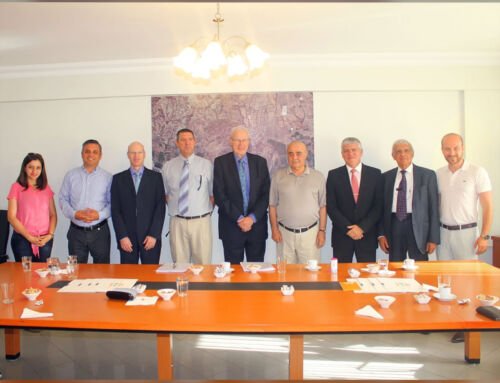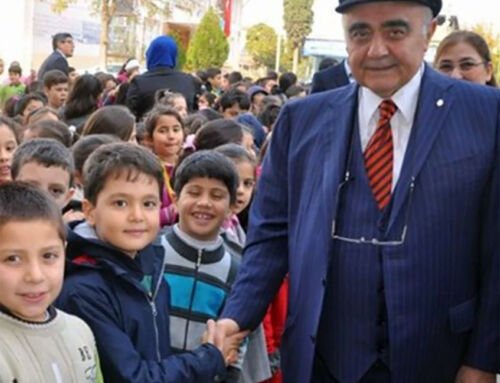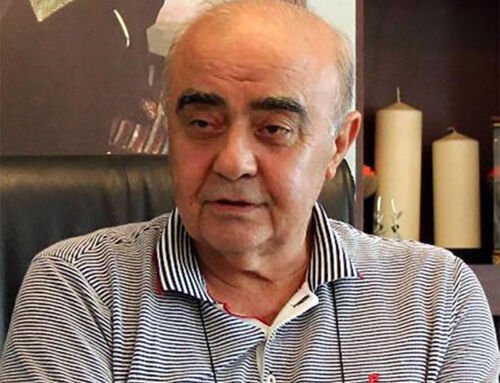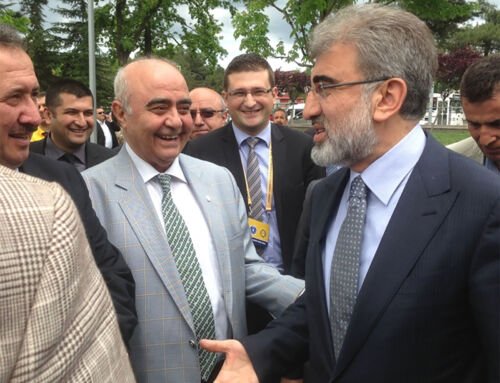Within the scope of non-condensable gas (NCG) reinjection in Turkey, an interview was conducted with Prof. Dr. Niyazi Aksoy and Dr. Kutlu Çakır from Menderes Geothermal A.Ş. (MEGE) on NCG reinjection applications in Salavatlı Geothermal Field and the future of the sector.
Environmentally friendly and sustainable applications are becoming increasingly important in the geothermal energy sector. In this context, an interview was conducted with Prof. Dr. Niyazi Aksoy from NTU Geothermal Consulting about the current status of geothermal NCG (Non-Condensable Gases) reinjection studies in Turkey, applications in the field and the future of the sector.
Can you give us information about the current status of studies on geothermal NCG reinjection in Turkey?
Geothermal NCG reinjection studies in Turkey have gained great momentum in recent years. In particular, in geothermal fields such as Aydın and Denizli, where GES are widely located, intensive projects are being carried out on the reinjection of harmful gases such as CO2 and H2S. These studies are carried out in order to reduce the environmental impacts of geothermal power plants and increase social acceptance. Leading companies are developing solutions suitable for the production conditions in the field, ensuring that NCG is pumped back into the reservoirs and trying to optimize this process.
NCG is mostly composed of CO2, H2S and hydrocarbon-based greenhouse gases. These gases are released into the atmosphere during production. The greenhouse gas emissions of GPPs create the risk of encountering a carbon tax in the future. In recent years, there have been many proposals and studies on the re-injection of NCG into geothermal reservoirs.
How did you start your work on NCG (Non-condensable gases) reinjection and what are the most important findings you have achieved in this process?
Our studies on the re-injection of NCG into geothermal reservoirs are based on a TUBITAK research project that we started in 2013. In this study, we learned that CO2 and H2S, which are particularly problematic, dissolve very easily in water. The solubility of gases in water increases as the temperature decreases. Therefore, more NCG can dissolve in the low-temperature waters that are reinjected. Another parameter of solubility is pressure. In short, as the pressure increases and the temperature decreases, more NCG can dissolve in water. Our research project was supported by MEGE and DORA-2 GES data was used in this project.
If, under NCG operating conditions, the NCG dissolution pressure is above the reinjection pressure, the NCG pressure can be increased with a compressor to reach the dissolution pressure conditions. In some operating conditions, the NCG pressure may be above the reinjection pressure. In this case, it is possible to pump NCG without the need for a compressor.
As a result, it is possible to pump all of the NCG back into the reservoir. However, if a compressor is used, domestic consumption may increase significantly. Therefore, the incentive mechanism in geothermal energy should be reviewed and zero-emission GESs should be rewarded.
Menderes Geothermal A.Ş. (MEGE) General Manager Dr. Kutlu Çakır was interviewed about his field applications and the results of NCG reinjection processes. Mr. Kutlu, can you tell us about your field applications and the results of your NCG reinjection processes as Menderes Geothermal Inc.?
Menderes Geothermal A.Ş. (MEGE) is a subsidiary of MB Holding A.Ş. Our company plays a leading role in geothermal energy in Turkey and the world. DORA-1 is the first private sector geothermal power plant in Turkey. Our presence in Croatia, Velika GES, is the world’s first GES that produces electricity by converting old oil wells into production wells.
NCG reinjection without using a compressor was first started in Turkey at MEGE. We are happy to see that it has recently become widespread in other fields. MEGE has 80 MW installed capacity with 5 Binary GES in Aydın Salavatlı geothermal field.
The first GES in the field is DORA-1 with a capacity of 7.95 MW, which was commissioned in 2006. While the highest temperature in the field is 213oC, the wells of the GES have an average production temperature of 160-180oC. While the NCG rates were 1.5% of the produced fluid by mass at the beginning, they decreased over time and fell to an average of 0.5%. The decreasing NCG amount facilitated NCG injection.
What are your future goals?
NCG reinjection studies at Menderes Geothermal Inc. (MEGE) have yielded positive results. NCG is completely pumped back into the reservoir in DORA-1, DORA-2 and DORA-3A units. NCGs at 7-8 bar pressure taken from the NCG emission point in these GPPs are connected to the reinjection line with stainless pipes. Due to the low pressure of the reinjection wells, all NCG is pumped back into the reservoir together with the reinjected water. The application in DORA-2 and DORA-3A units has exceeded a year. On-site measurement was requested from TÜBİTAK regarding the absence of NCG emission for these units and it was officially documented. NCG injection in DORA-1 unit has been ongoing for a few months. With the project work we have recently started, approximately half of the NCG can be injected in DORA-3B unit. Our goal is to achieve 100% NCG reinjection in all our geothermal power plants.






